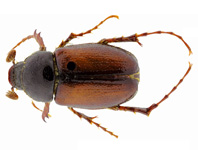Abstract
The aim of this study was to analyze the 12 species which belong to the subgenus Bombus (Thoracobombus) by identifying, collating and testing the applicability of geometrics morphometrics for distinguishing the species. This was carried out on 133 females and 42 males which were collected from various localities in Turkey. After digitizing landmarks on the right fore wings, 2-dimensional Cartesian coordinates were calculated and by Procrustes analysis the coordinates were standardized and superimposed. Principal Components Analysis (PCA) and Canonical Variates Analysis (CVA) were performed to show the distribution of all species. Then, deformations which appeared in thin-plate splines were observed. Mean values of all the specimens were calculated and Sequential, Agglomerative, Hierarchical, and Nesting clustering method (SAHN) was performed with these data to obtain the dissimilarity trees. It can be concluded that all species were found to have consistently different wing shapes from each other. In females, the species B. armeniacus, B. mesomelas and B. pomorum which resemble each other, were also found to be similar based on their wing morphometry. Both in females and males, the subspecies B. sylvarum citrinofasciatus and B. sylvarum daghestanicus and the species B. humilis and B. laesus exposed high similarity in wing morphometry. In males, results showed that the species B. armeniacus and B. mesomelas and the species B. humilis and B. zonatus have very similar wing shape.

